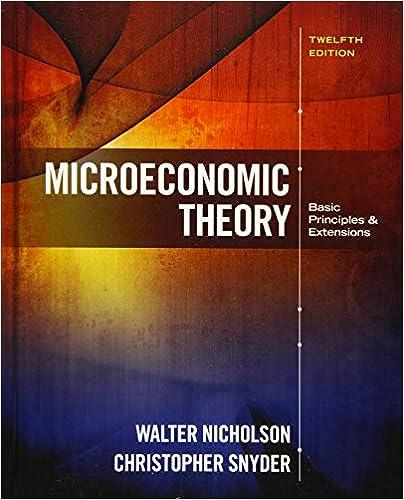The perfectly competitive videotape-copying industry is composed of many firms that can copy five tapes per day
Question:
The perfectly competitive videotape-copying industry is composed of many firms that can copy five tapes per day at an average cost of $10 per tape. Each firm must also pay a royalty to film studios, and the per-film royalty rate (r) is an increasing function of total industry output (Q):
r 5 0.002Q.
Demand is given by Q 5 D 1P2 5 1,050 2 50P.
a. Assuming the industry is in long-run equilibrium, what will be the equilibrium price and quantity of copied tapes? How many tape firms will there be? What will the per-film royalty rate be?
b. Suppose that demand for copied tapes increases to Q 5 D 1P2 5 1,600 2 50P.
In this case, what is the long-run equilibrium price and quantity for copied tapes? How many tape firms are there? What is the per-film royalty rate?
c. Graph these long-run equilibria in the tape market, and calculate the increase in producer surplus between the situations described in parts
(a) and (b).
d. Show that the increase in producer surplus is precisely equal to the increase in royalties paid as Q expands incrementally from its level in part
(b) to its level in part (c).
e. Suppose that the government institutes a $5.50 per-film tax on the film-copying industry. Assuming that the demand for copied films is that given in part (a), how will this tax affect the market equilibrium?
f. How will the burden of this tax be allocated between consumers and producers? What will be the loss of consumer and producer surplus?
g. Show that the loss of producer surplus as a result of this tax is borne completely by the film studios. Explain your result intuitively.
Step by Step Answer:

Microeconomic Theory Basic Principles And Extensions
ISBN: 9781305505797
12th Edition
Authors: Walter Nicholson, Christopher M. Snyder






